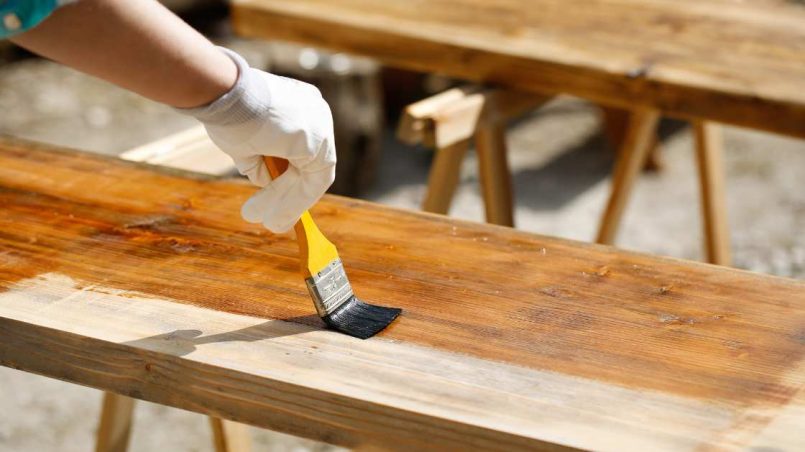When it comes to removing paint, varnish, or other finishes from wood, metal, or other surfaces, many DIY enthusiasts turn to Citristrip as a safe and effective option. But with so many different products available, it can be tough to know which one is the best choice for your project. In this article, we’ll be comparing Citristrip paste and gel to help you make an informed decision.
What is Citristrip?
Citristrip is a brand of paint and finish remover that is made from a blend of citrus solvents and other ingredients. It’s known for its ability to effectively remove a wide range of finishes, including oil-based paints, water-based paints, varnishes, and polyurethanes, without damaging the underlying surface. It’s also relatively safe to use, as it’s low in volatile organic compounds (VOCs) and has a pleasant citrus scent.
Citristrip Paste
Citristrip paste is a thick, creamy substance that is applied to the surface using a putty knife or other tool. It’s designed to stay in place, making it a good choice for vertical surfaces or areas with intricate details. Once applied, the paste begins to work its magic, softening and breaking down the finish so that it can be easily scraped off.
One of the main benefits of Citristrip paste is its ability to work on multiple layers of paint or finish at once. This makes it a great choice for projects where you need to remove multiple coats of paint or finish, as it can save you time and effort. It’s also relatively easy to clean up, as it can be removed with water or a citrus-based cleaner.
However, there are a few downsides to using Citristrip paste. For one, it can be quite messy, as it tends to drip and splatter as it’s applied. It can also take longer to work than other forms of Citristrip, as it needs to be left on the surface for a longer period of time (typically 24-48 hours) to fully penetrate and soften the finish.
Citristrip Gel
Citristrip gel is a thicker, more viscous version of the paste, and it’s applied in much the same way. It’s designed to stay in place, making it a good choice for vertical surfaces or areas with intricate details. Like the paste, it begins to work its magic by softening and breaking down the finish so that it can be easily scraped off.
One of the main benefits of Citristrip gel is that it’s less messy than the paste, as it tends to stay in place better and is less prone to dripping and splattering. It’s also faster-acting, as it can penetrate and soften the finish in as little as 15-30 minutes.
However, Citristrip gel has a few downsides as well. For one, it may not work as well on multiple layers of paint or finish, as it may not have enough time to fully penetrate and soften all the layers. It’s also more difficult to clean up, as it requires a solvent-based cleaner to remove it from surfaces and tools.
Citristrip Paste Vs Gel?
Ultimately, the answer will depend on your specific needs and preferences. Here are a few things to consider when deciding which one to use
- Surface type: If you’re working on a vertical surface or an area with intricate details, Citristrip gel may be the better choice, as it tends to stay in place better and is less prone to dripping and splattering. On the other hand, if you’re working on a flat, horizontal surface, either option will likely work well.
- Number of layers: If you’re dealing with multiple layers of paint or finish, Citristrip paste may be the better choice, as it’s more effective at penetrating and softening multiple layers at once. If you’re only dealing with one layer, either option will likely work well.
- Working time: If you’re in a hurry and need to remove the finish as quickly as possible, Citristrip gel may be the better choice, as it can penetrate and soften the finish in as little as 15-30 minutes. If you don’t mind waiting a bit longer, either option will likely work well.
- Clean-up: If you’re concerned about making a mess, Citristrip gel may be the better choice, as it’s less prone to dripping and splattering. However, it may be more difficult to clean up, as it requires a solvent-based cleaner to remove it from surfaces and tools. If you don’t mind using a solvent-based cleaner, either option will likely work well.
Conclusion
Citristrip paste and gel are both effective options for removing paint, varnish, and other finishes from wood, metal, and other surfaces. Each has its own unique set of benefits and drawbacks.
Citristrip paste is a thick, creamy substance that is effective at removing multiple layers of paint or finish, but it can be quite messy and take longer to work than other forms of Citristrip. Citristrip gel is a thicker, more viscous version of the paste that is less messy and faster-acting, but it may not work as well on multiple layers of paint or finish and is more difficult to clean up.
Overall, both Citristrip paste and gel are safe and effective options for removing paint and finishes, and either one can be a good choice for your project depending on your specific needs.
Hopefully, the article on citristrip paste vs gel was useful for you. Thanks.














